Europes MSA’s
| When the UK authorities were building their first motorway they needed a service area so to get ideas of what to do they traveled to Europe which already had some areas of its own. The size and the facilities of the early MSA’s in the UK bear a striking similarity to European ones, even today’s European ones. UK MSA’s have much higher traffic – at a guess about 300%-1000% more. But then our motorways are busier. Just look at a map of Europe. Observe the density of the blue motorway lines. Now look at the UK, and see how few and thin the motorways are. Compare London which has a ring motorway and a few motorways just edging inside the ring, with Essen in Germany. Essen is a smaller city, but has 3 motorways crossing it horizontally, and others crossing those vertically.There are other differences too- in Europe rest areas, with few facilities are reasonably regular.What can you expect when you travel? | 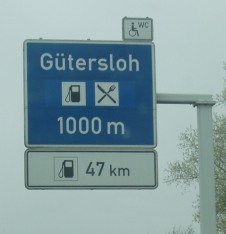 And you thought Norton Canes was a silly name for a service area…. |
| FranceThere’s basically two types of stop. A rest area (aire) which offers parking, bins, and normally a toilet. Nothing fancy mind, the toilet will most likely be covered but technically outside. It’s a good idea to have your own loo paper. These services are quite common, but there is no real guide to how frequently you will see one.
You’ll also find services with some more facilities. At the very least this will be a Petrol station + shop, but the shop will offer a coffee area, where you can get a drink from the vending machine and stand and drink it. Rather similar to a BP connect, but with a sizable area for drinking/smoking etc. An even larger area may have a restaurant, and feel rather similar to a uk MSA except without the crowds. |
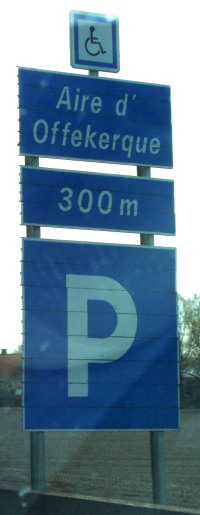 |
| BelgiumSimilar to France, fewer rest areas, but more garage type services. Be warned some petrol stations often have automated “pay at pump” pumps, which won’t accept non-belgium credit cards- you put your card in the machine beside the pump to start it dispensing. Signs for services are normally a P symbol, with appropriate pump/refreshment signs. The sign will normally indicate how far to the next services with petrol, but you may find other minor stopping points imbetween. | 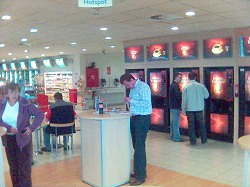 A Belgian petrol station shop. Buy your hot drink at the machine and drink it stood at the podiums. The main shop area is towards the rear. In a separate building is the sitting restaurant: 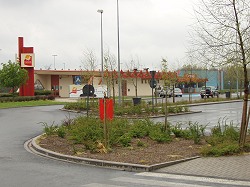 |
| Holland Majority of areas are the petrol station type. Again you’ll find the occasional pump dedicated to Dutch cards, so don’t just roll up at any old pump. Quite often an area will be off the motorway at a local services, and these often have more facilities such as more comprehensive shops, a hotel, and a burger bar of some form or the other. The signs are quite good and letting you know what’s available at the next services along. |
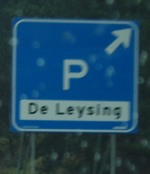 Not much on offer at this dutch area |
||||
|
|||||
| Germany Germany used to be a little short on stopping opportunities in some area, but that seems to be being addressed with on going construction of many new Rastplatz’s.Be ready with some spare change as often there is a charge for loos, of 0.30cent or 0.50cent at Sanifair loos. (however they are of very high quality). Children are always free. The more expensive ones give you in return a voucher which can be redeemed in the shop. There seems to be 3 types of area in Germany: Probably the biggest “chain” on the German autoroutes is Tank Und Rast http://www.rasthaus-baden-baden.de/en/index.htm http://www.rasthaus-irschenberg.de/eng/main.php |
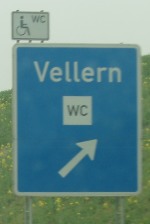 Above:Again, not much here. Below: In return for paying to use the loo’s, you get a rather nice voucher to spend in the shop. Or if you are on a business trip, you could use it to claim expenses if you were so inclined…. 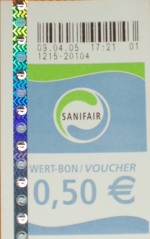 Nice loos though. For a demo, seehttp://www.sanifair-online.de/ Nice loos though. For a demo, seehttp://www.sanifair-online.de/ |
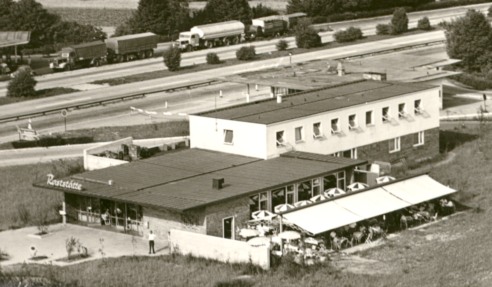 Old photograph of Autobahn-Raststätte Stuttgart-Süd |

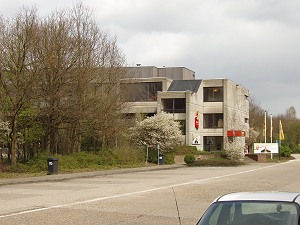
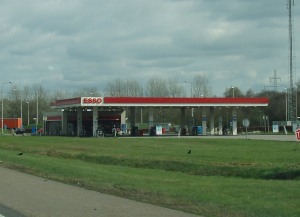
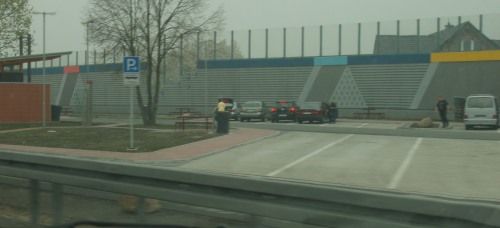
The depicted bridge restaurant is at Gierle on the Belgian side of the Dutch/Belgian border. It is a Belgian bridge restaurant, not a Dutch.